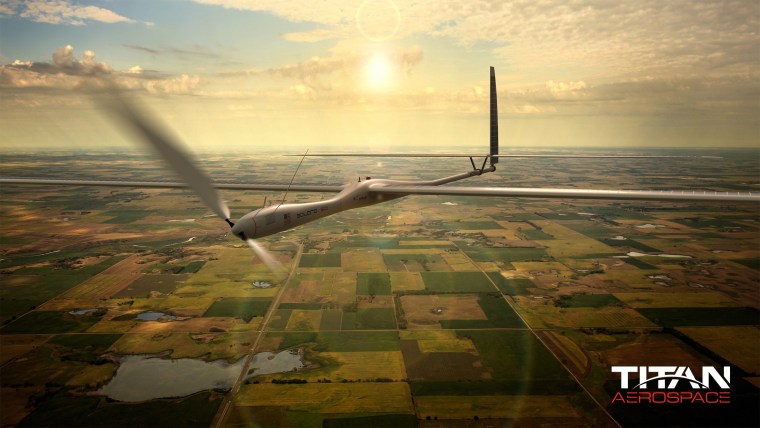A prototype for an Internet-beaming, solar-powered drone created by Google crashed during testing last May, and the National Transportation Safety Board has just issued a summary of its investigation into the incident (PDF).
The Titan Solara drone, apparently, began its trip in good condition, but the pilot (operating it remotely) noticed latency in the instruments as soon as he took control. He attempted to bring the craft to an altitude and speed where the second remote pilot could take over and land the plane safely.
Related: Google's Solar-Powered Internet Drone Crashes During Test Flight
Unfortunately, the report said, "the aircraft then encountered significant thermal air mass activity and began to both climb and exceed its design airspeed...Visible deformation of the wing structure was witnessed by ground personnel during the overspeed condition."
Ultra-lightweight craft like this one, with the wingspan of a commercial jet but weighing no more than a car, aren't meant for high speeds and sudden changes in conditions. So it's disturbing but perhaps not surprising that during the uncontrolled descent that followed the loss of control, both wings separated from the fuselage and the rest of the plane hit the ground "in a nose down attitude."
Related: Facebook Shows Off Its Solar-Powered 'Aquila' Internet Drone
The drone was destroyed, but luckily the test flight was (no doubt deliberately) in an unpopulated desert area and no one was hurt. It was a setback for the project, one of several (including an effort from Facebook) aiming to use solar-powered planes to provide Internet to distant areas — but such failures are to be expected in experimental aircraft.

